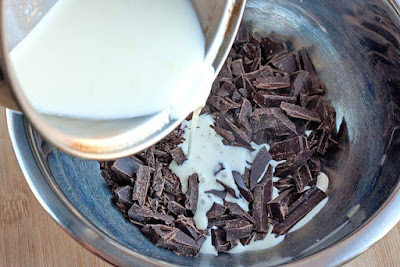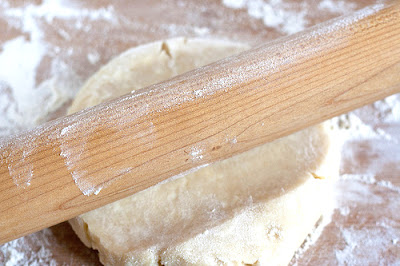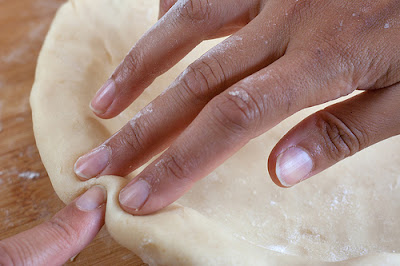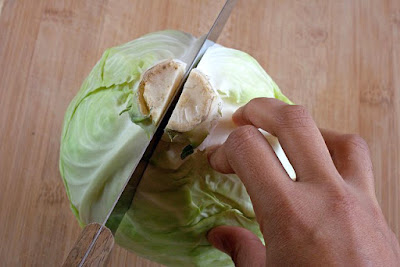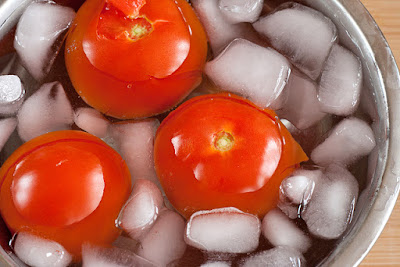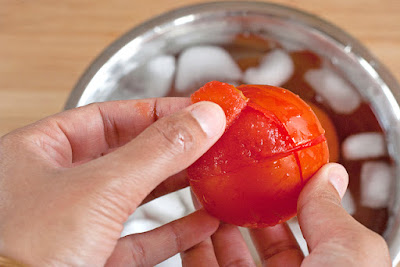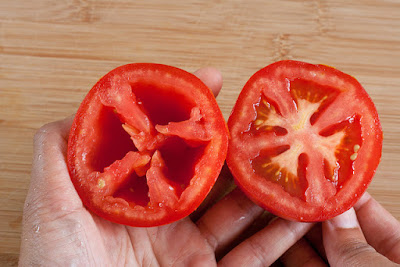My Dad and I manage all of the grocery shopping during the holidays. It's a big relief for my mom who prefers to minimize all kitchen-related activities. The fact that Dad and I are bewitched by food, however, can pose a problem. Put us in a supermarket and we lose all sense of time.
Dad begins his meditation in the cheese aisle, where he carefully assesses the smoked gouda. After selecting only the best, he reverently moves on to evaluate what's available in the realm of mixed nuts and wine. Should it be Merlot or Cabernet? Spain, Argentina, or California?
I head to my culinary playground - the baking aisle - where I ogle at local honey and sparkly sprinkles. I ponder all of the decadent desserts I can create with chocolate: airy mousse, toothsome brownies, lush ganache. Meanwhile, Mom is tapping her foot at home and wondering if we'll ever show up. Remember, her goal is to get in and out of the kitchen, lickety-split!
How to Make Ganache
Used to sculpt truffles, fill cakes, and blanket tarts, ganache is the home cook’s oh-so-easy-to-make secret weapon. It requires two ingredients: heavy cream and chocolate. Since the chocolate goes unmasked, be sure to buy the finest quality you can afford.
To make ganache that’s on the thinner side (and perfect to pour over tortes or spread over cakes in lieu of icing) start with an equal ratio of chocolate to heavy cream. To make ganache with a fudge-like consistency, use twice as much chocolate as heavy cream.
Finely chop the chocolate with a chef’s knife.
Place the chocolate in a heatproof bowl.
Pour the cream into a saucepan. Bring it to a boil, and then quickly remove it from the heat to help stop the water in the cream from evaporating.
Carefully pour the hot cream over the chopped chocolate. Let it stand for a minute. The chocolate will start to melt.
Stir the chocolate and cream, beginning in the middle of the bowl. After several minutes, it will start to emulsify and silky, smooth ganache will appear in the middle of the bowl.
Stir in wider circles to blend the rest of the chocolate and the cream.
Continue stirring until the chocolate and cream are completely combined.
This article was originally published on WholeFoodsMarketCooking.com
Dad begins his meditation in the cheese aisle, where he carefully assesses the smoked gouda. After selecting only the best, he reverently moves on to evaluate what's available in the realm of mixed nuts and wine. Should it be Merlot or Cabernet? Spain, Argentina, or California?
I head to my culinary playground - the baking aisle - where I ogle at local honey and sparkly sprinkles. I ponder all of the decadent desserts I can create with chocolate: airy mousse, toothsome brownies, lush ganache. Meanwhile, Mom is tapping her foot at home and wondering if we'll ever show up. Remember, her goal is to get in and out of the kitchen, lickety-split!
How to Make Ganache
Used to sculpt truffles, fill cakes, and blanket tarts, ganache is the home cook’s oh-so-easy-to-make secret weapon. It requires two ingredients: heavy cream and chocolate. Since the chocolate goes unmasked, be sure to buy the finest quality you can afford.
To make ganache that’s on the thinner side (and perfect to pour over tortes or spread over cakes in lieu of icing) start with an equal ratio of chocolate to heavy cream. To make ganache with a fudge-like consistency, use twice as much chocolate as heavy cream.
Finely chop the chocolate with a chef’s knife.
Place the chocolate in a heatproof bowl.
Pour the cream into a saucepan. Bring it to a boil, and then quickly remove it from the heat to help stop the water in the cream from evaporating.
Carefully pour the hot cream over the chopped chocolate. Let it stand for a minute. The chocolate will start to melt.
Stir the chocolate and cream, beginning in the middle of the bowl. After several minutes, it will start to emulsify and silky, smooth ganache will appear in the middle of the bowl.
Stir in wider circles to blend the rest of the chocolate and the cream.
Continue stirring until the chocolate and cream are completely combined.
This article was originally published on WholeFoodsMarketCooking.com




